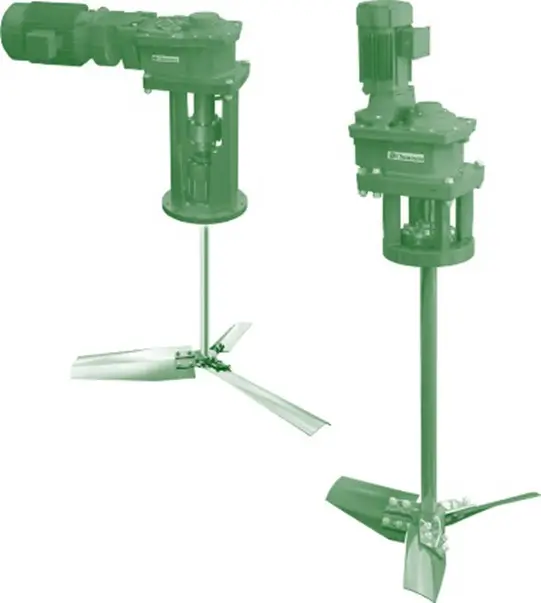Principles of Turbines:
- Turbine mixers operate on the principle of high-shear mixing.
- The blades of the turbine create a turbulent flow in the liquid, which ensures rapid mixing and can create high shear forces suitable for breaking down particles and dispersing materials.
Construction of Turbines:

This is a sample ad placement!
- Blades: Typically, multiple flat or curved blades attached to a central hub.
- Shaft: Central shaft that holds the turbine blades.
- Drive System: Motor and gearbox to rotate the shaft and blades.
- Mounting: Can be mounted vertically or horizontally in the mixing vessel.
- Vessel: The container that holds the liquid or slurry to be mixed.
Working:
- The turbine blades rotate at high speed when the motor is activated.
- This rotation generates radial and axial flow, creating turbulent mixing zones.
- The turbulent flow ensures thorough mixing of the liquid and efficient dispersion of solid particles or immiscible liquids.
- Mixing continues until the desired level of homogeneity is achieved.
This is a sample ad placement!
Uses:
- Chemical Industry: Mixing and dispersing chemicals.
- Pharmaceuticals: Preparing suspensions and emulsions.
- Food Industry: Blending sauces, soups, and beverages.
Merits:
- Efficient for mixing low to medium viscosity liquids.
- Generates high shear forces, suitable for dispersing solids and emulsifying immiscible liquids.
- Capable of handling a wide range of materials.
This is a sample ad placement!
Demerits:
- High energy consumption.
- Not suitable for high-viscosity materials.
- Can cause significant shear stress, which may damage delicate ingredients.
Thank you for reading from Firsthope's notes, don't forget to check YouTube videos!

